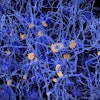Lippincott Williams & Wilkins, Philadelphia, 2002, $399.
The practice of neuroradiology has enjoyed an unrivaled surge of technological advancements in the last decade. With the explosion of new endovascular procedures and imaging hardware and software, it is truly difficult for the physician in training, as well as the seasoned neuroimaging specialist, to stay current. It is an exciting time in this specialty as advances in therapy combine with new technology.
MR imaging has proven to be a limitless tool with which to study the nervous system in both normalcy and disease. As we continue to unravel the mystery that is the human brain, we need reference sources to learn from and consult. Magnetic Resonance Imaging of the Brain and Spine provides us with the most current major reference.
The text is divided into two volumes, each with five major parts. In volume one, the first nine chapters cover standard MR imaging hardware and software, and advanced imaging techniques (such as diffusion, perfusion, and fast MRI). Chapters 10-22 present comprehensive brain pathology. Chapters 23-26 discuss MR of the skull base, including the orbit and sella tucica region.
The majority of volume two focuses on pediatric and adult diseases of the spine. The last three chapters of the second volume include interesting discussions on advanced MR applications such as clinical functional brain MRI and MR spectroscopy. The contributing authors are experts in their respective subject matter and have made distinct efforts to produce the most current information and references.
The first few chapters of volume two provide an excellent review of MR concepts, basic hardware, the principles governing MR angiography, and MR techniques such as diffusion tensor imaging. This information is valuable to residents, fellows, and private practice neuroradiologists who are beginning to perform these exams with updated software.
The brain section of the text is an exhaustive, well-organized compilation of information. The quality of images and rarity of cases presented in this section are truly impressive. Many outstanding examples of common entities also are provided.
The chapters on disordered brain development and white matter and metabolic disease are particularly impressive. Diseases are depicted in the early stages when findings are more characteristic. Examples of rare entities are included as well as tables that aid in understanding classification schemes. Many metabolic disease entities have accompanying MR spectra with the standard pulse sequence image.
Part three, which deals with the skull base, orbit, and temporal bone, has more images than text. MRI of these anatomic locations is somewhat difficult and it is important to be comfortable looking at these structures without the osseous landmarks generally provided by CT. For this reason, this section serves a purpose. High-resolution images of the temporal bone and labyrinth are included and will likely be used with greater frequency in diagnosing head and neck pathology.
The spine section of the text begins with a concise review of embryogenesis, which is imperative in understanding the pathology of congenital spine malformations. Histologic sections, along with high-quality diagrams and gross pathologic photos, add to the comprehensive nature of this discussion. I have already used this text when consulting with pediatric neurosurgeons and have found it to be excellent.
The shortcomings of this work are few. It is not inherently a text for a resident. Neuroradiology requires an appreciation for the complimentary nature that CT, fluoroscopy, angiography, nuclear medicine, and MRI play in the diagnostic armamentarium. For the resident who is just starting out, other neuroradiology texts that stress a multimodality approach to diagnosis and treatment would be better.
The omission of neck MR imaging is this book’s main weakness. MRI of the neck, from the thoracic inlet to the cavernous sinus, is a staple of any neuroradiology practice, and it has assumed a vital role in complimenting CT in evaluation of head and neck pathology.
Still,Magnetic Resonance Imaging of the Brain and Spine is remarkable in its depth and timeliness. This cutting edge book is ideal for anyone who routinely views MR images of the brain and spine.
By Dr. Brian J. FortmanAuntMinnie.com contributing writer
March 19, 2002
Dr. Fortman is a second year neuroradiology fellow at Johns Hopkins Hospital in Baltimore, where he also completed his residency. He will be joining Carolina Radiology Associates in Myrtle Beach , S.C. in July 2002 as a neuroimaging specialist.
If you are interested in reviewing a book, let us know at [email protected].
The opinions expressed in this review are those of the author, and do not necessarily reflect the views of AuntMinnie.com.
Copyright © 2002 AuntMinnie.com


.fFmgij6Hin.png?auto=compress%2Cformat&fit=crop&h=100&q=70&w=100)




.fFmgij6Hin.png?auto=compress%2Cformat&fit=crop&h=167&q=70&w=250)











